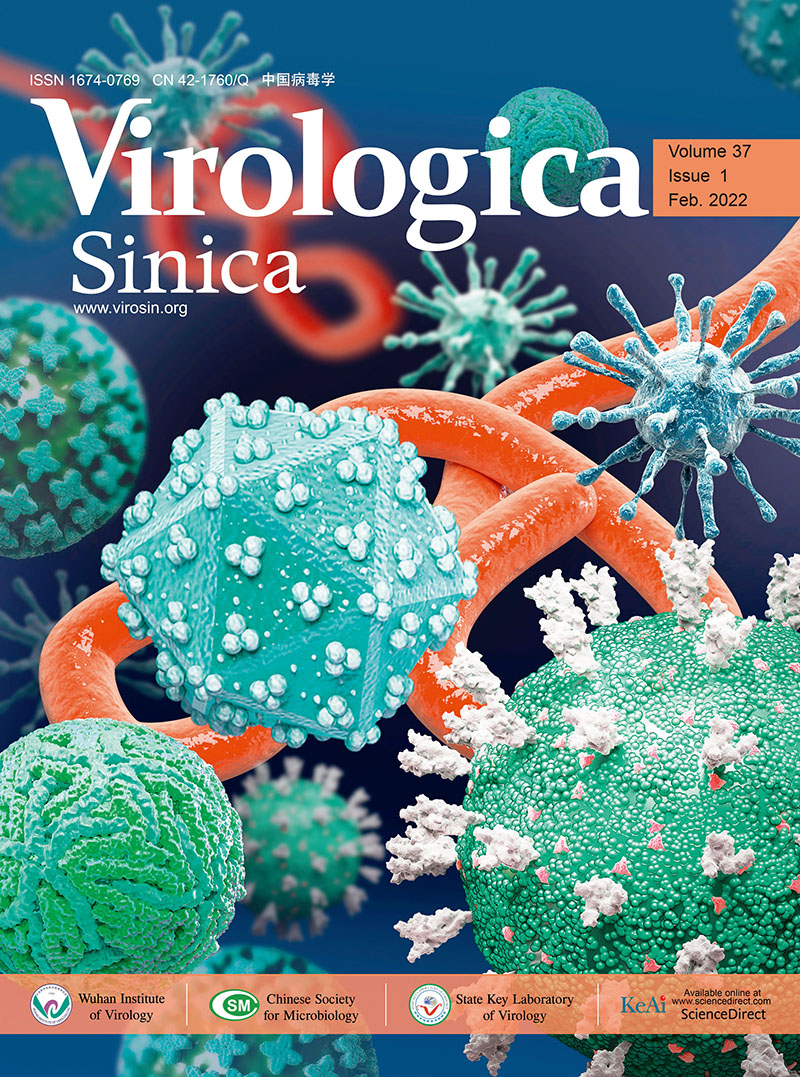-
Acosta, E. G., Bruttomesso, A. C., Bisceglia, J. A., Wachsman, M. B., Galagovsky, L. R.,Castilla, V., 2008. Dehydroepiandrosterone, Epiandrosterone and Synthetic Derivatives Inhibit Junin Virus Replication in Vitro. Virus Res. 135, 203-212.
-
Ashraf, U., Zhu, B., Ye, J., Wan, S., Nie, Y., Chen, Z., Cui, M., Wang, C., Duan, X., Zhang, H., 2016. Microrna-19b-3p Modulates Japanese Encephalitis Virus-Mediated Inflammation Via Targeting Rnf11. J. Virol. 90, 4780-4795.
-
Bradley, W. G., Kraus, L. A., Good, R. A., Day, N. K., 1995. Dehydroepiandrosterone Inhibits Replication of Feline Immunodeficiency Virus in Chronically Infected Cells. Vet. Immunol. Immunopathol. 46, 159-168.
-
Chen, Z., Ye, J., Ashraf, U., Li, Y., Wei, S., Wan, S., Zohaib, A., Song, Y., Chen, H., Cao, S., 2016. Microrna-33a-5p Modulates Japanese Encephalitis Virus Replication by Targeting Eukaryotic Translation Elongation Factor 1a1. J. Virol. 90, 3722-3734.
-
Coleman, D., Leiter, E., Schwizer, R., 1982. Therapeutic Effects of Dehydroepiandrosterone (DHEA) in Diabetic Mice. Diabetes. 31, 830-833.
-
Daigle, J., Carr, D. J., 1998. Androstenediol Antagonizes Herpes Simplex Virus Type 1-Induced Encephalitis through the Augmentation of Type I Ifn Production. J. Immunol. 160, 3060-3066.
-
Dalla Valle, L., Couet, J., Labrie, Y., Simard, J., Belvedere, P., Simontacchi, C., Labrie, F., Colombo, L., 1995. Occurrence of Cytochrome P450c17 Mrna and Dehydroepiandrosterone Biosynthesis in the Rat Gastrointestinal Tract. Mol. Cell. Endocrinol. 111, 83-92.
-
Dewald, L. E., Starr, C., Butters, T., Treston, A., Warfield, K. L., 2020. Iminosugars: A Host-Targeted Approach to Combat Flaviviridae Infections. Antivir. Res. 104881.
-
Erlanger, T. E., Weiss, S., Keiser, J., Utzinger, J., Wiedenmayer, K., 2009. Past, Present, and Future of Japanese Encephalitis. Emerg. Infect. Dis. 15, 1.
-
Fan, W., Qian, S., Qian, P., Li, X., 2016. Antiviral Activity of Luteolin against Japanese Encephalitis Virus. Virus Res. 220, 112-116.
-
Guo, J., Jia, X., Liu, Y., Wang, S., Cao, J., Zhang, B., Xiao, G., Wang, W., 2020. Screening of Natural Extracts for Inhibitors against Japanese Encephalitis Virus Infection. Antimicrob. agents chemother. 64.
-
Gwon, Y.-D., Strand, M., Lindqvist, R., Nilsson, E., Saleeb, M., Elofsson, M., Overby, A. K., Evander, M., 2020. Antiviral Activity of Benzavir-2 against Emerging Flaviviruses. Viruses. 12, 351.
-
Imran, M., Saleemi, M. K., Chen, Z., Wang, X., Zhou, D., Li, Y., Zhao, Z., Zheng, B., Li, Q., Cao, S., Ye, J., 2019. Decanoyl-Arg-Val-Lys-Arg-Chloromethylketone: An Antiviral Compound That Acts against Flaviviruses through the Inhibition of Furin-Mediated Prm Cleavage. Viruses. 11, 1011.
-
Ke, S., Wei, Y., Shi, L., Yang, Q., Yang, Z., 2013. Synthesis of Novel Steroid Derivatives Derived from Dehydroepiandrosterone as Potential Anticancer Agents. Anticancer Agents Med. Chem. 13, 1291-1298.
-
Labrie, F., Luu-The, V., Labrie, C., BeLanger, A., Simard, J., Lin, S.-X., Pelletier, G., 2003. Endocrine and Intracrine Sources of Androgens in Women: Inhibition of Breast Cancer and Other Roles of Androgens and Their Precursor Dehydroepiandrosterone. Endocr. Rev. 24, 152-182.
-
Laureti, M., Narayanan, D., Rodriguez-Andres, J., Fazakerley, J. K., Kedzierski, L., 2018. Flavivirus Receptors: Diversity, Identity, and Cell Entry. Front. Immunol. 9, 2180.
-
Lowe, R., Barcellos, C., Brasil, P., Cruz, O. G., Honorio, N. A., Kuper, H., Carvalho, M. S., 2018. The Zika Virus Epidemic in Brazil: From Discovery to Future Implications. Int. J. Environ. Res. Public Health. 15, 96.
-
Mackenzie, J. S., Gubler, D. J., Petersen, L. R., 2004. Emerging Flaviviruses: The Spread and Resurgence of Japanese Encephalitis, West Nile and Dengue Viruses. Nat. Med. 10, S98.
-
Majewska, M. D., Demirgo, S., Spivak, C. E., London, E. D., 1990. The Neurosteroid Dehydroepiandrosterone Sulfate Is an Allosteric Antagonist of the Gabaa Receptor. Brain Res. 526, 143-146.
-
Mercorelli, B., Palu, G., Loregian, A., 2018. Drug Repurposing for Viral Infectious Diseases: How Far Are We? Trends Microbiol. 26, 865-876.
-
Misra, U. K., Kalita, J., 2010. Overview: Japanese Encephalitis. Prog. Neurobiol. 91, 108-120.
-
Pedersen, N. C., North, T. W., Rigg, R., Reading, C., Higgins, J., Leutenegger, C., Henderson, G. L., 2003. 16α-Bromo-Epiandrosterone Therapy Modulates Experimental Feline Immunodeficiency Virus Viremia: Initial Enhancement Leading to Long-Term Suppression. Vet. Immunol. Immunopathol. 94, 133-148.
-
Pierson, T. C., Diamond, M. S., 2020. The Continued Threat of Emerging Flaviviruses. Nat. Microbiol. 5, 796-812.
-
Romanutti, C., Bruttomesso, A. C., Castilla, V., Bisceglia, J. A., Galagovsky, L. R., Wachsman, M. B., 2009. In Vitro Antiviral Activity of Dehydroepiandrosterone and Its Synthetic Derivatives against Vesicular Stomatitis Virus. Vet. J. 182, 327-335.
-
Saiz, J.-C., Martin-Acebes, M. A., 2017. The Race to Find Antivirals for Zika Virus. Antimicrob Agents Chemother. 61.
-
Solomon, T., 2004. Flavivirus Encephalitis. N. Engl. J. Med. 351, 370-378.
-
Wan, S., Ashraf, U., Ye, J., Duan, X., Zohaib, A., Wang, W., Chen, Z., Zhu, B., Li, Y., Chen, H., 2016. Microrna-22 Negatively Regulates Poly (I: C)-Triggered Type I Interferon and Inflammatory Cytokine Production Via Targeting Mitochondrial Antiviral Signaling Protein (MAVS). Oncotarget. 7, 76667.
-
World Health Organization, 2016. Zika situation report: neurological syndrome and congenital anomalies. https://apps.who.int/iris/handle/10665/204348/(accessed 19 December 2020).
-
Yang, J., Guo, Z., Liu, X., Liu, Q., Wu, M., Yao, X., Liu, Y., Cui, C., Li, H., Song, C., 2020. Cytotoxicity Evaluation of Chloroquine and Hydroxychloroquine in Multiple Cell Lines and Tissues by Dynamic Imaging System and Physiologically Based Pharmacokinetic Model. Front. Pharmacol. 11.
-
Zhu, B., Ye, J., Nie, Y., Ashraf, U., Zohaib, A., Duan, X., Fu, Z. F., Song, Y., Chen, H., Cao, S., 2015. Microrna-15b Modulates Japanese Encephalitis Virus-Mediated Inflammation Via Targeting Rnf125. J. Immunol. 195, 2251-2262.
-
Zhu, B., Ye, J., Ashraf, U., Li, Y., Chen, H., Song, Y., Cao, S., 2016. Transcriptional Regulation of Mir-15b by C-Rel and Creb in Japanese Encephalitis Virus Infection. Sci. Rep. 6, 1-15














 DownLoad:
DownLoad: